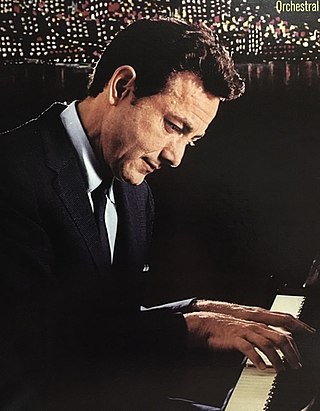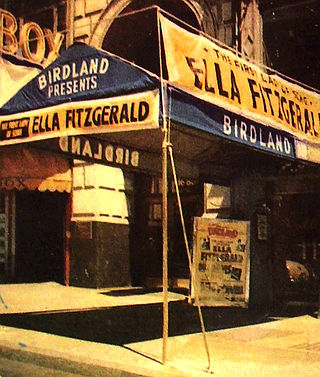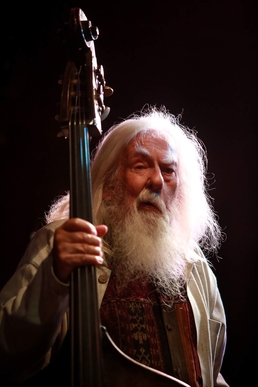
Boniface Ferdinand Leonard "Buddy" DeFranco was an American jazz clarinetist. In addition to his work as a bandleader, DeFranco led the Glenn Miller Orchestra for almost a decade in the 1960s and 1970s.
John Daniel LaPorta was a jazz clarinetist and composer.

Leonard Joseph Tristano was an American jazz pianist, composer, arranger, and teacher of jazz improvisation.

Warne Marion Marsh was an American tenor saxophonist. Born in Los Angeles, his playing first came to prominence in the 1950s as a protégé of pianist Lennie Tristano and earned attention in the 1970s as a member of Supersax.

Richard Alan Beirach is an American jazz pianist and composer.

Joseph "Joe" Bushkin was an American jazz pianist.

Connie Crothers was an American jazz improviser and pianist.
Willie Dennis was an American jazz trombonist known as a big band musician but who was also an excellent bebop soloist.

Birdland is a jazz club started in New York City on December 15, 1949. The original Birdland, which was located at 1678 Broadway, just north of West 52nd Street in Manhattan, was closed in 1965 due to increased rents, but it re-opened for one night in 1979. A revival began in 1986 with the opening of the second nightclub by the same name that is now located in Manhattan's Theater District, not far from the original nightclub's location. The current location is in the same building as the previous headquarters of The New York Observer.
James Elbert Raney was an American jazz guitarist, born in Louisville, Kentucky, United States, known for his work from 1951 to 1952 and then from 1953 to 1954 with the Red Norvo trio and, during the same time period, with Stan Getz. In 1954 and 1955, he won the DownBeat Critics' Poll for guitar. Raney worked in a variety of jazz mediums, including cool jazz, bebop, post bop, hard bop, and mainstream jazz.

A jazz trio is a group of three jazz musicians, often a piano trio comprising a pianist, a double bass player and a drummer. Jazz trios are commonly named after their leader, such as the Bill Evans Trio.
Gene Ramey was an American jazz double bassist.
Vinnie Burke was an American jazz bassist born in Newark, New Jersey.
Ronald Ball was an English jazz pianist, composer and arranger.

Peter Ind was a British jazz double bassist and record producer.

Lennie Tristano, also known as Tristano, is a 1956 album by jazz pianist Lennie Tristano. At its release, the album was controversial for its innovative use of technology, with Tristano overdubbing piano and manipulating tape speed for effect on the first four tracks.
Richard Tabnik is an American jazz saxophonist who lives in New York City.

By the end of the 1940s, the nervous energy and tension of bebop was replaced with a tendency towards calm and smoothness, with the sounds of cool jazz, which favoured long, linear melodic lines. It emerged in New York City, as a result of the mixture of the styles of predominantly white swing jazz musicians and predominantly black bebop musicians, and it dominated jazz in the first half of the 1950s. The starting point were a series of singles on Capitol Records in 1949 and 1950 of a nonet led by trumpeter Miles Davis, collected and released first on a ten-inch and later a twelve-inch as the Birth of the Cool. Cool jazz recordings by Chet Baker, Dave Brubeck, Bill Evans, Gil Evans, Stan Getz and the Modern Jazz Quartet usually have a "lighter" sound which avoided the aggressive tempos and harmonic abstraction of bebop. Cool jazz later became strongly identified with the West Coast jazz scene, but also had a particular resonance in Europe, especially Scandinavia, with emergence of such major figures as baritone saxophonist Lars Gullin and pianist Bengt Hallberg. The theoretical underpinnings of cool jazz were set out by the blind Chicago pianist Lennie Tristano, and its influence stretches into such later developments as Bossa nova, modal jazz, and even free jazz. See also the list of cool jazz and West Coast musicians for further detail.

The New Tristano is an album by jazz pianist Lennie Tristano. It was recorded in 1961 and was released by Atlantic Records in February 1962.

Perception is the debut album by pianist Connie Crothers recorded in 1974 and released on the Danish label, SteepleChase.














